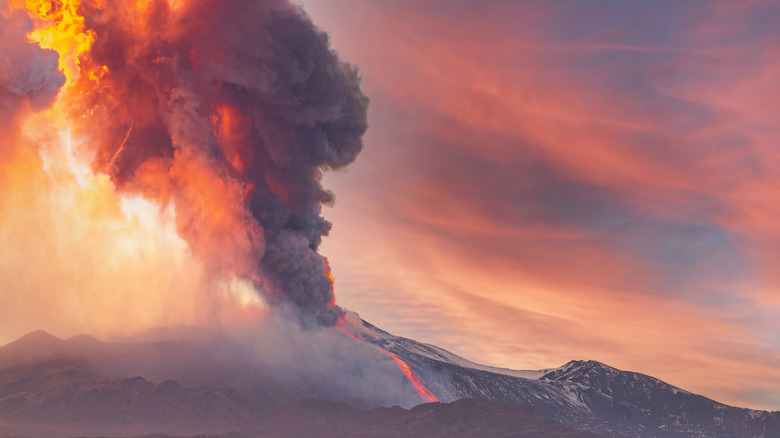The Connection Between The Appalachian Mountains And The Ice Age
Beautiful mountain ranges feel as old as time itself. Did you know, though, that there's a connection between the Appalachian Mountains and the Ice Age?
Much of what we recognize as the Appalachian mountain range was forged nearly 500 million years ago, stretching for nearly 2,000 miles from the border of Canada to the state of Alabama, and acting as a natural barrier between the Interior Lowlands of the North American continent (via Britannica).
Some of the oldest parts of the mountain range were formed much earlier than that, however, when two continents collided roughly 1 billion years ago. Since then, the Appalachians have played a significant role in human history, beyond just their connection to the Ice Age. Most recently, they influenced the settlement of the North American continent for both Indigenous populations and European settlers.
At first, North American colonists stayed on the eastern side of the Appalachians, while Indigenous people lived high up in the mountains. In the 1760s, in fact, European settlers were forbidden from crossing the mountain range by the British Crown. This was largely ignored, however, leading to several conflicts, according to the NLM.
Stretching further back, though, is the Ice Age. The connection between the Appalachian Mountains and the Ice Age influenced human history, and not just on the North American continent, but all over the world.
Volcanic explosions filled the air with carbon
While many parts of the Appalachians were formed when two continents collided, some of the most northernmost areas of the mountain range were formed by volcanic eruptions roughly 500 million years ago. These weren't just any volcanic eruptions, either. Because of this intense volcanic activity, there was more carbon in the Earth's atmosphere during this period than ever before (via Mental Floss).
This added carbon dropped global temperatures because much of this excess carbon was drawn into the planet's oceans, plunging the planet into an ice age about 15 million years later. There was no human life that we know of on the Earth roughly 500 million years ago, better known as the Cambrian period, and the frigid effect that extra carbon had on the atmosphere is unusual. It continues to be studied, according to Scientific American.
Otherwise, around this timeframe, landing squarely between two ice ages, one of the most severe mass extinctions ever took place. Following that, there was the Cambrian explosion — an evolutionary spike in biodiversity, much of which remains alive today, according to National Geographic. Many aspects of the landscape we are now familiar with also began to take shape as the glaciers formed and melted during this time.
From this perspective, it could be said that the Appalachian Mountains are not only connected to the Ice Age, but they also played a part in fostering life as we know it on planet Earth.

